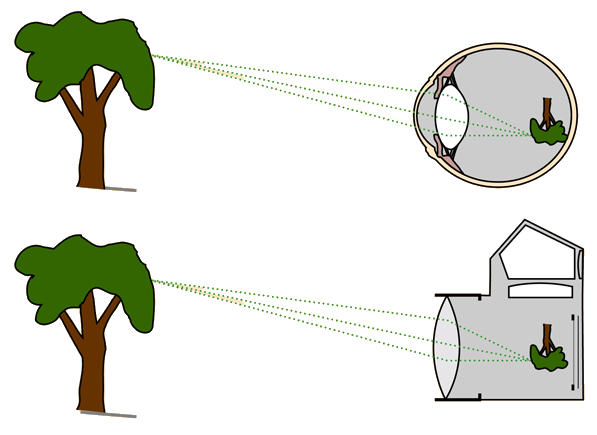Refraction and the Eye
Refraction is the phenomenon which makes image formation possible by the eye as well as by cameras and other systems of lenses.
Most of that refraction in the eye takes place at the first surface, since the transition from the air into the cornea is the largest change in index of refraction which the light experiences. About 80% of the refraction occurs in the cornea and about 20% in the inner crystalline lens.
While the inner lens is the smaller portion of the refraction, it is the total source of the ability to accommodate the focus of the eye for the viewing of close objects. For the normal eye, the inner lens can change the total focal length of the eye by 7-8%.
Common eye defects are often called "refractive errors" and they can usually be corrected by relatively simple compensating lenses.
|
